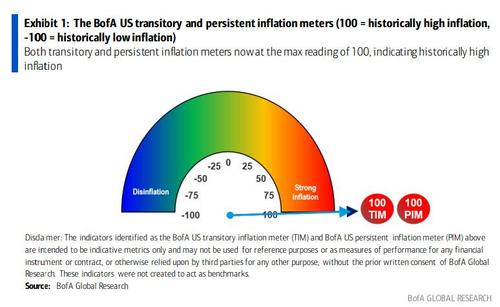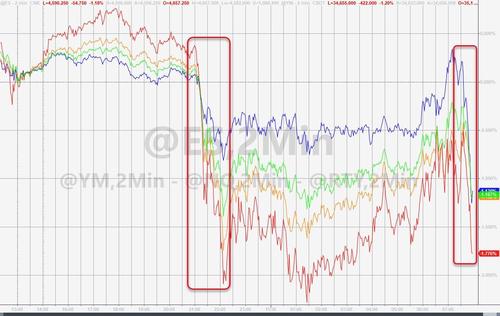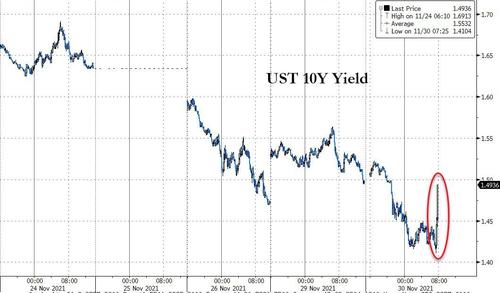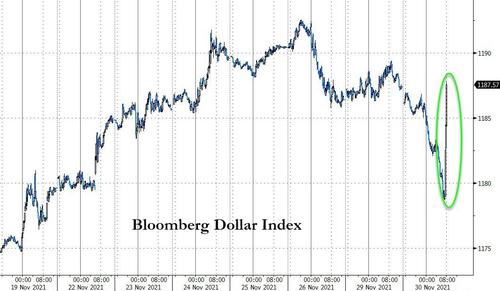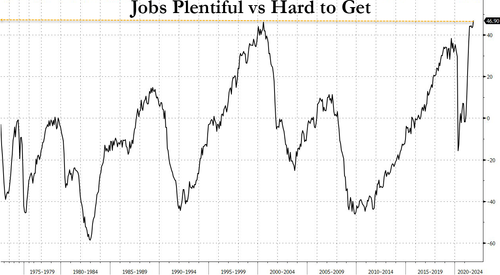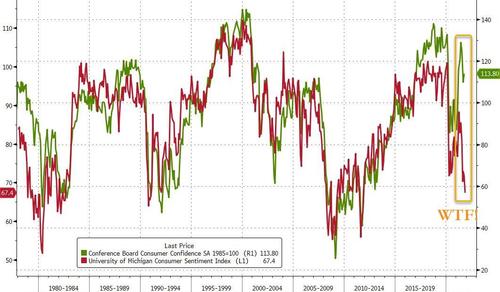A new COVID-19 variant is sparking calls for the same old pandemic restrictions and mandates. It’s been less than a week since the World Health Organization (WHO) labeled the omicron variant of the virus, first identified in South Africa, as a “variant of concern.” Politicians and public health officials have snapped into action with advice—and requirements—to mask up and vaccinate.
On Monday, New York Mayor Bill de Blasio urged even fully vaccinated New Yorkers to return to wearing masks indoors.
“It’s time to remind people and double down and say, ‘Even if you started to move away from masks before, we’re telling you to get those masks back on now,'” the mayor said at a press conference.
An advisory issued by New York City’s health commissioner urges, but doesn’t require, people to wear masks in building lobbies, offices, and retail stores.
De Blasio also expanded the city’s vaccine mandate to include all staff at city-funded day cares, which the Post reports covers about 102,000 workers.
National Institute of Health Director Francis Collins has issued similar advice at the national level, telling CNN‘s Dana Bash on Sunday that people should continue to wear masks when indoors around the unvaccinated and continue to socially distance.
“We have to use every kind of tool in our toolbox to keep [Omicron] from getting in a situation that makes this worse,” he said.
Over in the U.K., masks are once again being required in most public settings in England, a measure Prime Minister Boris Johnson said would “buy us time in the face of this new variant.”
President Joe Biden has already issued a travel ban for non-citizens and non–permanent residents coming from South Africa and a number of other southern African nations.
That provoked some mild criticism from the WHO, which has historically been critical of travel bans to fight pandemics. Other critics have lambasted Biden for being too timid.
New York Times columnist Zeynep Tufecki has called for travel to be restricted from any countries where the omicron variant is known to be spreading, and for those restrictions to apply to U.S. citizens as well. She also recommended stricter testing and quarantine requirements for inbound passengers.
Meanwhile in The Washington Post, Leana Wen, a public health professor at George Washington University, similarly recommended a quarantine and testing regime for all international travelers. She also urged the Biden administration to impose a vaccine mandate for domestic air travel and interstate train travel, and for localities to bring back mask mandates.
Biden on Monday urged people get vaccinated, get a booster shot, and mask up. So long as people did those things, “there is no need for the lockdown” he announced.
The president said that he was also working closely with pharmaceutical companies Pfizer, Moderna, and Johnson & Johnson to swiftly approve and rollout a modified vaccine if necessary.
Vaccines have been the most effective tool for protecting people from the worst consequences of COVID-19 thus far. Hopefully, they will remain effective or can be easily modified to fight the omicron variant.
In a Tuesday-published interview with the Financial Times, Moderna’s CEO said there will likely be a “material drop” in current vaccines’ effectiveness.
Everything else that politicians are currently doing, from masking to porous travel bans, feels like so much political theater. It’s a well-worn script that officials are apparently committed to following every time a new COVID variant pops into existence.
REASON WEBATHON
Reason‘s annual webathon starts today! Editor in Chief Katherine Mangu-Ward makes the case for why people who like free minds, free markets, and free content should donate today:
We bring you stories about how to take shrooms, supply-chain policy shenanigans, the fate of barely legal strippers in Texas, the Centers for Disease Control and Prevention’s litany of failures, and the miscarriages of criminal justice every single day. Because when you love something, you give it away for free. (Even the stuff in the print magazine eventually goes online for free, though you should still subscribe to get the full dead-tree experience.)
Click here to donate.
FREE MINDS
People who are upset that Kyle Rittenhouse isn’t going to prison are also pretty steamed that he’s going to college. Rittenhouse recently told Fox News host Tucker Carlson that he would like to attend Arizona State University (ASU) soon. That’s not sitting well with a coalition of left-wing student groups at the school, who have demanded that Rittenhouse—who was recently acquitted of multiple charges related to his shooting of three people in Kenosha, Wisconsin—be barred from attending.
“Even with a not-guilty verdict from a flawed ‘justice’ system, Kyle Rittenhouse is still guilty to his victims and the family of those victims,” the coalition declared in a statement posted on Friday, according to the Washington Examiner. “Join us to demand from ASU that those demands be met to protect students from a blood-thirsty murderer.”
ASU, for its part, says that Rittenhouse is currently not enrolled in any classes.
FREE MARKETS
The African nation of Senegal’s ban on single-use plastic products is producing a backlash. In January 2020, the Senegalese government announced a plastic ban. A grace period during the pandemic is now coming to an end, so the prohibition will now start to be enforced.
Bloomberg CityLab reports that this isn’t sitting well with Sengalese merchants, many of them women, who sell clean drinking water in now-banned plastic sachets:
the new rule has drawn attention to another problem: access to clean drinking water and the women who make a living filtering, packaging and re-selling tap water in plastic bags across Senegal’s biggest cities. An estimated 30,000 jobs are at risk, according to the Collective of Filtered Water Actors (CAES), a union that represents the industry’s manufacturers and sellers….
Women and girls took to the streets in Dakar at the beginning of September to protest the ban. Their business thrives on the demand for inexpensive water in the Sahelian climate. One 14-year-old reseller said she can buy a pack of multiple sachets for 750 CFA francs and sell it for 1,500 CFA francs.
QUICK HITS
- A bill introduced in the New Jersey Legislature would make it harder for local governments to ban the construction of accessory dwelling units, or granny flats. Similar reforms in California have produced a substantial amount of new housing.
- Rep. Lauren Boebert (R–Co.) made some pretty bigoted remarks remarks about Rep. Ilhan Omar (D–Minn.). A phone call meant to patch things up has done the opposite.
- CNN anchor Chris Cuomo is under fire again for advising his brother, former New York Gov. Andrew Cuomo, on how to respond to the sexual harassment allegations that eventually led to his resignation earlier this year.
- Oakland pot merchants are asking for tax relief after a string of burglaries.
- Stocks are slumping in response to concerns about the new omicron variant.
- Merriam-Webster has picked “vaccine” as the word of the year.
The post The New Omicron Variant Is Sparking Demand for the Same Old COVID-19 Restrictions appeared first on Reason.com.
from Latest – Reason.com https://ift.tt/31caUfL
via IFTTT
